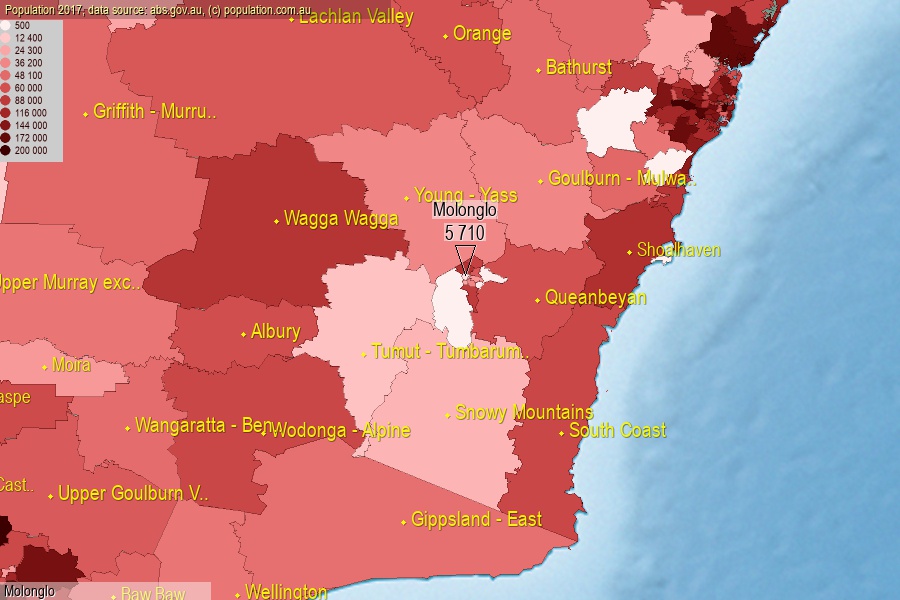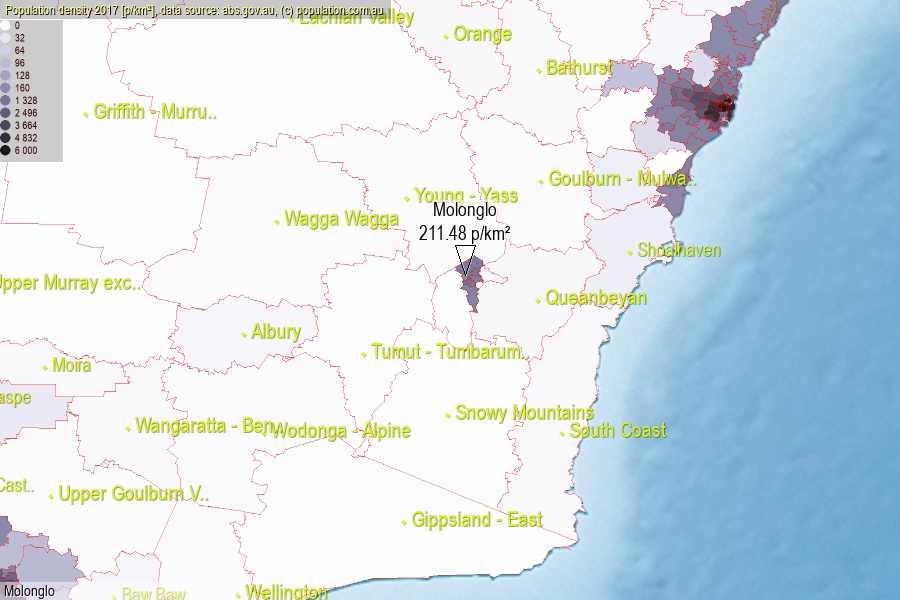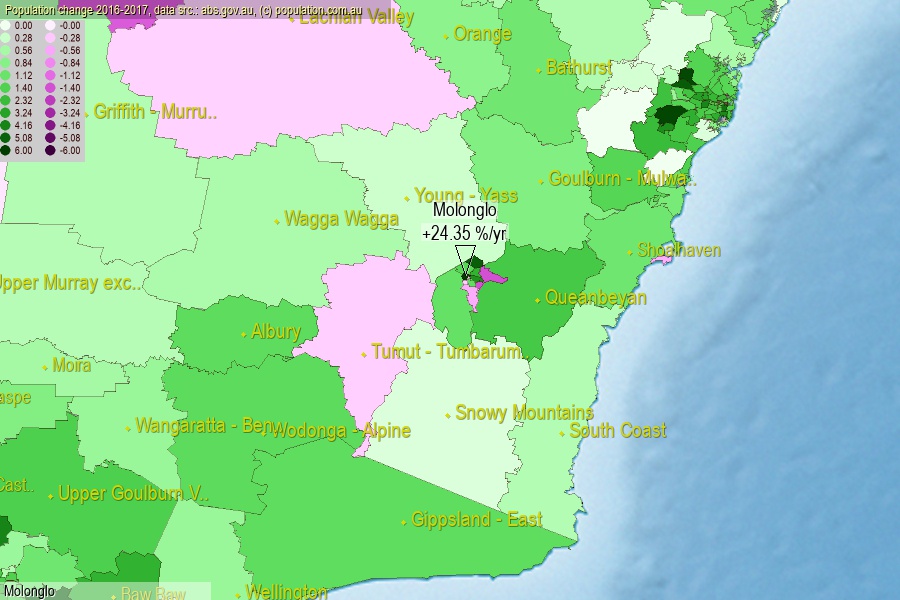 population.com.au
population.com.auLast official estimated population of Molonglo (as Statistical Area Level 3) was 5 710 people (on 2017-06-30)[2]. This was 0.02% of total Australian population and 1.362% of ACT population. Area of Molonglo is 27.00 km², in this year population density was 211.48 p/km² . If population growth rate would be same as in period 2016-2017 (+24.35%/yr), Molonglo population in 2025 would be 32 637. [0]



Click to enlarge. Molonglo is located in the center of the images.
Population [people], population density [p./km²] and population change [%/year] [2]
View borders » (new window) [4]
[2001-2002] -14.29 %/Y
[2002-2003] 0.00 %/Y
[2003-2004] 0.00 %/Y
[2004-2005] 0.00 %/Y
[2005-2006] 0.00 %/Y
[2006-2007] 0.00 %/Y
[2007-2008] 0.00 %/Y
[2008-2009] -16.67 %/Y
[2009-2010] 0.00 %/Y
[2010-2011] -20.00 %/Y
[2011-2012] +525.00 %/Y
[2012-2013] +708.00 %/Y
[2013-2014] +431.68 %/Y
[2014-2015] +189.57 %/Y
[2015-2016] +47.65 %/Y
[2016-2017] +24.35 %/Y
[0] Calculated with linear interpolation from officially estimated population
[1] Read more about SA3 and Australian Statistical Geography Standard (ASGS) on abs.gov.au
[2] Population data from Australian Bureau of Statistics (Population and density: 2017; change: 2016-2017)
[3] Digital Boundaries: Australian Statistical Geography Standard (ASGS) 2016.
[4] Border coordinates are simplifyed using Ramer-Douglas-Peucker algorithm.